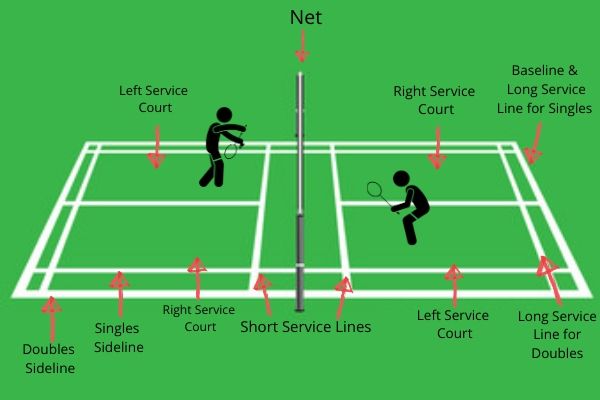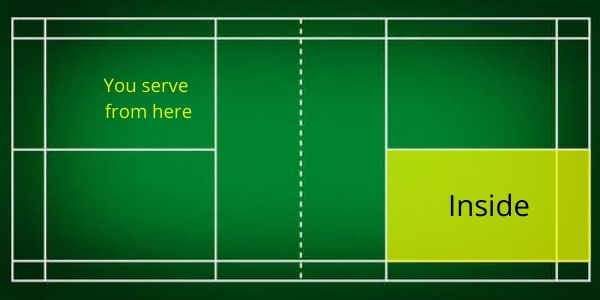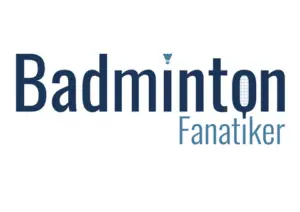In badminton, a service is the most crucial shot to start a rally. However, badminton has several rules concerning a service that are meant to limit the advantage of a serve.
In one of the previous posts, you will come across the different types of serves in badminton. The first step in learning a badminton serve is understanding the badminton service rules.
The rules place limitations on the way you serve, and service faults will lose you points. Service rules are different in singles and doubles. However, certain general rules are to be followed in both. This full guide will help you in understanding everything about service rules.
Let’s dive right in and learn the basic service rules in the game of badminton.
General Service Rules in Badminton
In badminton, singles and doubles follow a different pattern of services and there are a few rules that differ between them. However, I have enlisted a set of general rules that are to be followed in singles as well as doubles.

- The first and foremost rule is that you must always serve cross-court to your opponent. This means that you have to serve diagonally. The server and receiver must be in their respective diagonal courts. Notably, a service must be directed to and from diagonal courts.
- You cannot serve the shuttle unless your opponent is ready.
- The server and receiver must stand stationary on the court and cannot move until the shuttle has been served.
- You must not touch the boundary lines of the respective court. This is considered as a fault. However, if your service lands on the receiver’s boundary line, it is considered to be in.
- For love(zero) and even number scores, you serve from the right court. And when the score is odd, you serve from the left court. So every time you score a point, you have to change your service position depending on the score.
- The shuttle must be 1.15m above the court’s surface at the instant of being served. Anything above that is considered a fault. This can be a problem for tall players, but putting a standard height will reduce the arguments with the service judge for a service fault.
- From hitting the base of the shuttle, your service must be in one continuous motion.
- The serve has to be over the net and land on your opponent’s court beyond the service line. It is okay if it touches the top of the net.
Also read: Badminton Rules: An exquisite guide
Service Rules in Badminton Singles
Always remember, the valid service court in singles is long and thin. It is made up of four lines- The centerline, the singles sideline(inside sideline), the front service line, the backline( the outside backline).

If the service lands beyond these lines, it is considered as a fault.
The decision on who serves first is straightforward in singles. A coin is tossed and if you win the toss you can either choose either the service or court. The side winning the toss has the option of serving first, not serving first, or choosing sides.
Service Rules in Badminton Doubles
In doubles, the service court is wide and short. It consists of- The centreline, the doubles sideline (outside sideline), the front service line, and the inside backline (just before the outside backline).

It is considered a service fault if your service lands beyond these lines. While you serve, either from the right side or left side (depending on the score), your partner can stand anywhere on the court as long as he/she does not interfere with the service. Usually, the other player stands in the middle at the back of the court.
The most confusing rule for many is the change of place rule in doubles.
Here is a small explanation that will help you understand this rule.
When you win a point, you change your place with your partner to serve from the alternate left/right service court. While you change your place, your opponents will remain in the same service court while you serve.
The decision of who will serve in doubles is decided again with a toss of a coin. First, it is decided which team will serve first and then who will stand on the right and left service court. The service is always started from the right-hand service court so therefore, the person who decided to stand on that side will serve first.
Once the first rally is over, there are two possible scenarios.
- The server’s team could win the rally. In this case, the server’s team will gain a point and retain the serve. The person that serves rotates to the other side of the court to serve for the next rally.
- The receiver’s team could win the rally. They gain a point and win the serve. While serving, two things that need to be considered. The first being, what was their respective service court in the previous rally? Followed by, whats their score? If it is an even score, then the person standing on the right court will serve, and if an odd score, then the person standing on the left court will serve.
You must not change your court until you win a point and no player can receive two consecutive serves. Please remember that if a player has served or received out of turn, or has served or received from the wrong service court, then it is considered a service error, and not a fault.
Service Faults
Whenever a service fault is called, you lose a point and your opponent is awarded the rally. Most commonly it happens during a low serve. Here are the common service faults that you can come across.
- The first common fault takes place when the shuttle does not land on the correct service court of the opponent.
- The server’s/receiver’s feet are not stationary on the court. While serving or receiving, you cannot move your feet away from anywhere you are standing.
- You step forward while you serve.
- When the shuttle is hit twice in succession by a player. For instance, in doubles, if the shuttle touches the racquet or body of one particular player, it cant be hit by the partner to continue the rally.
- When your opponent attacks the net before the shuttle is served. This point goes in your favor.
- The shuttle, at the instant of being served, is higher than your waist or the head of the racquet is higher than the servers racquet hand.
- Any unnecessary delay in service can also be declared as a fault by the referee.
Therefore, when you are delivering a service, be aware of these fouls and try to avoid them.
Service Lets
A let is called by an umpire to halt play. The rally is stopped and replayed without changing the score or serving positions. There are various instances when a service let can occur. When a let occurs, the last service does not count and the player who serves has to serve again.
Here are a few scenarios in which the umpire calls a service let:
- You serve before your receiver is ready. However, if the receiver attempts the serve, he/she is considered to be ready.
- While servicing, the shuttle passes the net but get stuck on the net from the top. However, if the shuttle passes through the net, it is considered out of play.
- During play, the shuttle breaks off and the base completely separates from the rest of the shuttle.
FAQs
Who serves first in Badminton?
The first player/team to serve first in a badminton match is decided by a coin toss which is conducted by the umpire. The winner of the coin toss can choose between the two-
- To serve/receive first
- The Courtside
Further, if the winner chooses to serve first, the opponent player/team can choose the courtside from where they want to play.
However, if the winner chooses the side of the court, the opponent has to serve first. In doubles, any of the two players on the serving team can serve first. Likewise, any of the two players of the receiving end can receive first.
Which Side of the Court should you Serve From?
You should always serve from the right side of the court when you have an even number of points (for example, 0,2,4,6…). Conversely, you have to serve from the left side of the court when you have an odd number of points (for example, 1,3,5..). This is applicable for both singles and doubles.
Who serves first in the 2nd and 3rd games in Badminton?
In singles, the player/team who wins the first game serves first in the second game. In doubles, any player of the winning team can choose any player to serve first, and likewise, the receiving team can choose any of the players to receive first.
In the same way, the player or team that wins the second game will serve first in the third game.
Is a service considered if it falls on the service boundary line?
Yes, if a service lands on the line of the service boundary, it is considered a correct service, and the server is given the point. Well, this rule is applicable for other shots as well after service. If a shot lands on the boundary lines, it is considered a correct shot.
Is Overhead Badminton Service allowed?
No, you cannot serve overhead in badminton. As per the BWF guidelines, the shaft and racket head should be pointing in a downward direction.
How many serves are allowed in badminton?
Unlike Tennis where a player gets two chances to execute a service, in badminton, a player can serve only once and will lose a point if he/she makes a fault.
Does a service count if it touches the net but still lands within the service boundaries?
Yes, it is considered a valid serve if a service touches the net slightly but still falls within the service boundaries. However, this happens very rarely.
When do you rotate service positions in doubles?
Doubles partners rotate their service positions from right to left court when they win a point that they served.
At what height can you hold a shuttlecock while serving?
The shuttlecock should be below 1.1m from the surface of the ground while serving.
What if the receiver is not ready?
If a receiver is not ready, it is considered a ‘let’ and the server serves again. However, the service will be considered if the receiver attempts to hit the shuttle.
Conclusion
You must make sure that you understand all the rules before playing a game of badminton. Remember, a service fault is a point gone. Lack of knowledge of the rules will affect your play as you may lose points due to service faults. This will in turn prove to be an advantage for your opponent.
Mastering the service rules is equally important as mastering the different types of serves. It will not only help you in reducing your service faults, but you will also be able to identify when your opponent makes a fault.
If you have read this whole article and understood the theoretical concepts of the service rules, now it is time for you to practice and avoid service faults.
To learn more about various shots and techniques in badminton, check out the other articles on this website. You can start by learning how to return various types of serves perfectly.
I hope this article was helpful. If so, do share it so that it will reach other badminton enthusiasts as well.
Thanks for reading. Enjoy the game!
